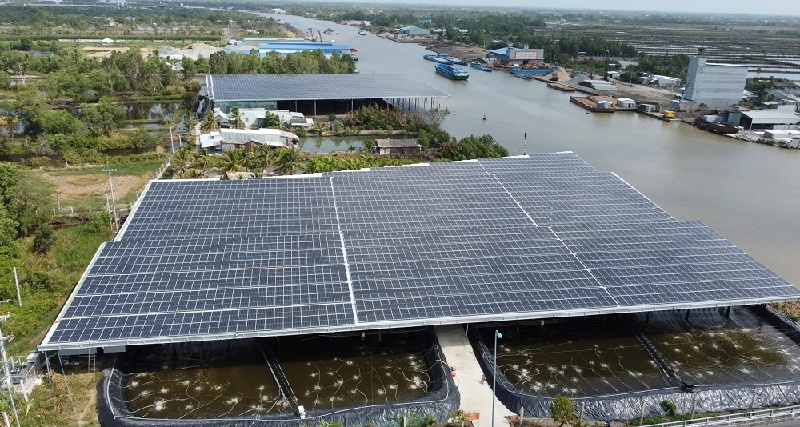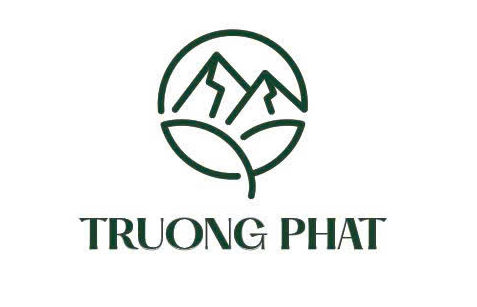Market News
Solar power in agriculture: Potential but… still open
The solar power model in agricultural production is considered to have great potential in Vietnam, even the agricultural sector is one of the most potential sectors in clean energy production. However, according to experts and businesses in the industry, to put this model into practice, it is facing many challenges.
Double profits if applying solar power
According to Mr. Mai Van Trinh, Director of the IAE Institute, the agricultural sector is one of the most potential sectors in clean energy production because the same area of land can bring many benefits.
According to the Director of the IAE Institute, by combining agricultural production and solar power production on the same area of agricultural land (APV model), farmers can earn additional profits from using self-produced and self-consumed electricity, the ability to sell electricity to the grid, but still maintain the conditions for raising livestock and shade-loving crops under solar panels.
 |
Mr. Do Huy Thiep – Deputy Director of the Institute for Agricultural Market and Institutional Research also said that, in addition to the meaning of profit, the agricultural – electricity model in terms of society also helps create more livelihoods and reduce conflicts between solar power investors and farmers.
Mr. Thiep said that on average, 1MW of solar power will require about 1ha of land, and low-value agricultural land is often the type of land that will be reclaimed for solar power. Therefore, the models of planting and cultivating under solar panels are also oriented towards meeting the green and clean standards of Vietnam as well as international standards, creating conditions for green and sustainable growth for the agricultural sector, as well as promoting the country’s renewable energy transition.
From practical experience through projects, sharing with VnBusiness, Mr. Vu Van Hai – Chairman of Hung Viet Green Technology Joint Stock Company, said that, with the natural conditions and climate of Vietnam, the application of solar power model in agricultural production has many advantages.
According to Mr. Hai, Vietnam has developed from agriculture, in recent years, the effective application of production achievements in the world has brought outstanding successes, demonstrated through the strong, diverse and sustainable export figures of Agriculture – Forestry – Fisheries. The land and water surface area used for this industry is very large, when combined with the solar power model, it not only increases investment efficiency and profits for farmers, but in many cases, solar power contributes significantly to creating a more favorable environment for cultivation such as: roofs, reducing temperature, radiation for crops, livestock…; creating a favorable environment for microorganisms to develop.
Vietnam also has a lot of cultivated areas in inconvenient places (mountainous areas, sparsely populated areas, aquaculture areas, etc.), combining with solar power helps to provide stable electricity at low cost for agricultural activities such as irrigation, lighting barns, or operating machinery at very low cost, increasing investment efficiency of agricultural projects…
In recent years, China has become a center for research and production of products used to install solar power projects, being a neighboring country of China has helped Vietnam have the lowest investment cost, fastest access to new products – technologies of this industry, contributing to faster implementation and at a more reasonable cost compared to other countries…
“With a series of favorable natural conditions that not every country has, while the actual demand is increasing, if solar power is deployed properly, it will not only improve production efficiency but also contribute to the development of green, sustainable agriculture stable” – Mr. Hai emphasized.
Businesses only hope for “clear policies”
However, solar power in agriculture still does not have a clear policy to distinguish it from other forms of solar power development. According to Mr. Mai Van Trinh, the expansion of solar power models in agricultural production still faces many challenges such as high investment costs (estimated capacity of 1MWp requires over 10 billion VND), no regulations on multi-purpose land use, lack of scientific evidence on suitable crops, inadequate understanding of stakeholders about solar power, no appropriate mechanism to identify and handle cases of policy exploitation, etc.
In addition, according to Decree 135/2024/ND-CP of the Government, which stipulates mechanisms and policies to encourage the development of self-produced and self-consumed rooftop solar power, farms can only sell a maximum of 20% of electricity output to the grid, making it difficult to recover capital.
Sharing about the difficulties and obstacles, Mr. Hai said that this has been discussed a lot in forums in recent years, even in Decree 135 as well as the newly issued Electricity Law, there is no specific mechanism for this industry. Official information shows that the Government is researching a synchronous and effective solution, avoiding the situation of taking advantage of the policy like the recent FIT2.
“Personally, I hope that this policy can be issued and take effect in 2025. For me, a clear policy is enough, without any other support, it is strong enough to promote the deployment of solar power in agriculture” – Chairman of Hung Viet Company expressed.
Mr. Phan Ngoc Anh, Director of Alena Energy Technology Company Limited said that he hopes that the authorities will increase propaganda and dissemination of knowledge about solar power in agriculture, especially in rural areas; support farms and farming households to access preferential loans to invest in solar power systems, build demonstration models of solar power in agriculture so that people can visit and learn…
In fact, in recent times, many agricultural solar power projects have been developed in Vietnam, including concentrated solar power projects or rooftop solar power projects. Combination methods include: Solar power combined with cultivation, this method is often applied to annual crops, a

 Tiếng Việt
Tiếng Việt


